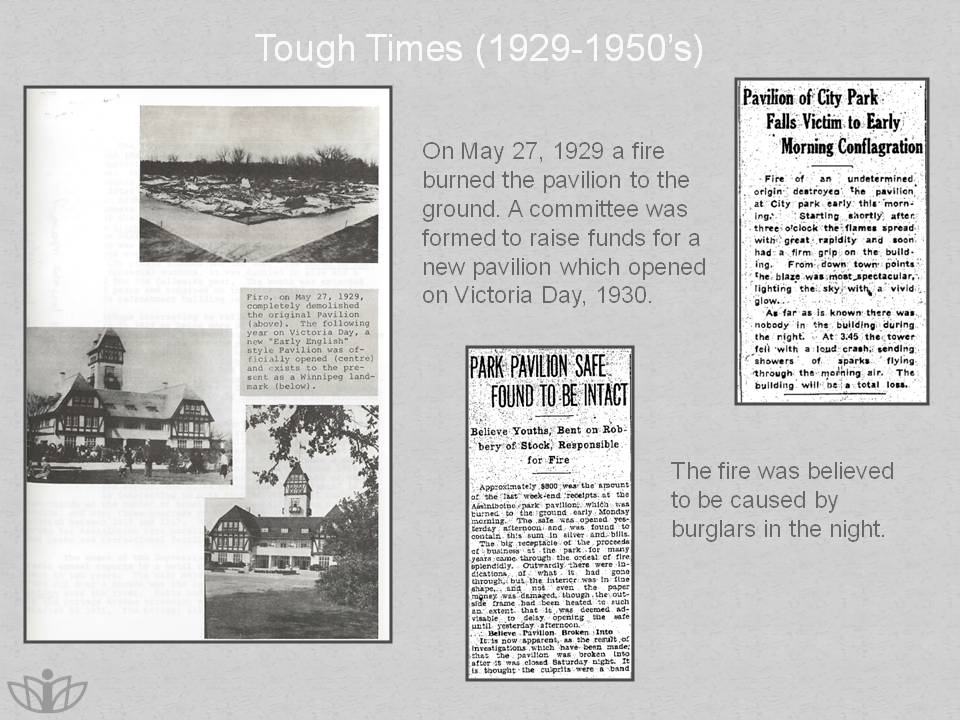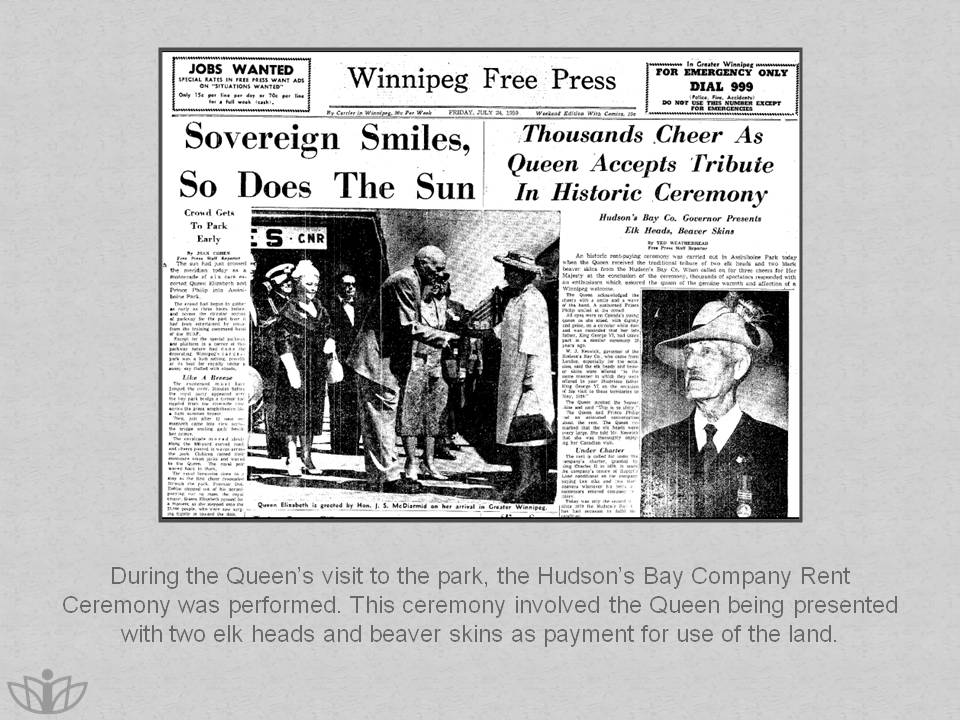
Assiniboine Park:
A Walk Through the Stories of the Park
The following materials were used in the development of this slideshow :
- The History and Development of Assiniboine Park and Zoo in Winnipeg, Manitoba, Canada
- Ivan Eyre Pavilion Gallery
- Leo Mol Sculpture Garden
- Teddy News
- Winnipeg - Official Visitors Guide
- Royal visits, a Manitoba album = Visites royales, un album-souvenir du Manitoba
- Assiniboine Park Zoo
- Manitoba newspapers held by the Legislative Library

























